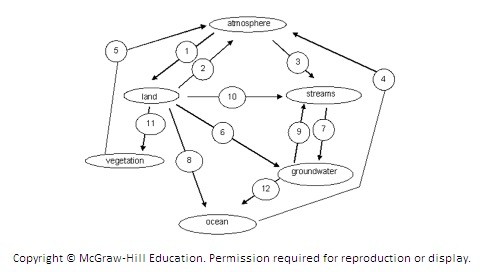In terms of dating of specific rocks, structures, or landscapes, relative age refers to
A) the approximate age of geological features based on the period or epoch in which they occurred. For instance, noting a feature is from the Cretaceous.
B) the age of one feature with respect to another within a sequence of events and deduced from the positions of rock strata above and below one another.
C) an educated guess of the rocks age based on its crystalline structure.
D) the age of geological features based on radiometric dating techniques.
E) the inability to ascertain exact age through isotopic methods and the necessity to provide a date range for such features.
B
You might also like to view...
A clast of granite found in a breccia is dated at 450 million years old. What can you conclude about the breccia?
a. The breccia is older than 450 million years. b. The breccia is younger than 450 million years old. c. The breccia was metamorphosed more than 450 million years ago. d. The breccia was metamorphosed fewer than 450 million years ago. e. You can’t draw any conclusions
An explanation for Sub-Saharan Africa's relatively poor soils is
A) that most of the region's soils are old. B) the lack of alluvial lowlands. C) the extensive glaciation of the continent during the last ice age. D) that the soils that are old and the lack of alluvial lowlands. E) the lack of extensive glaciation and older soils.
The following diagram illustrates the Hydrologic Cycle. Match the item below to the arrow on the diagram (note: some items may be used for more than one arrow).Example: If you believe that water passes from clouds to streams by evaporation then choose that answer for arrow 3. Match the item below to the arrow on the diagram for number 2. (Note: some items may be used for more than one arrow).
Match the item below to the arrow on the diagram for number 2. (Note: some items may be used for more than one arrow).
A. Evaporation B. Infiltration C. Transpiration D. Runoff E. Precipitation
Hypothermia is defined as a decrease in core body temperature, generally starting at:
A) 96°F. B) 95°F. C) 94°F. D) 93°F.